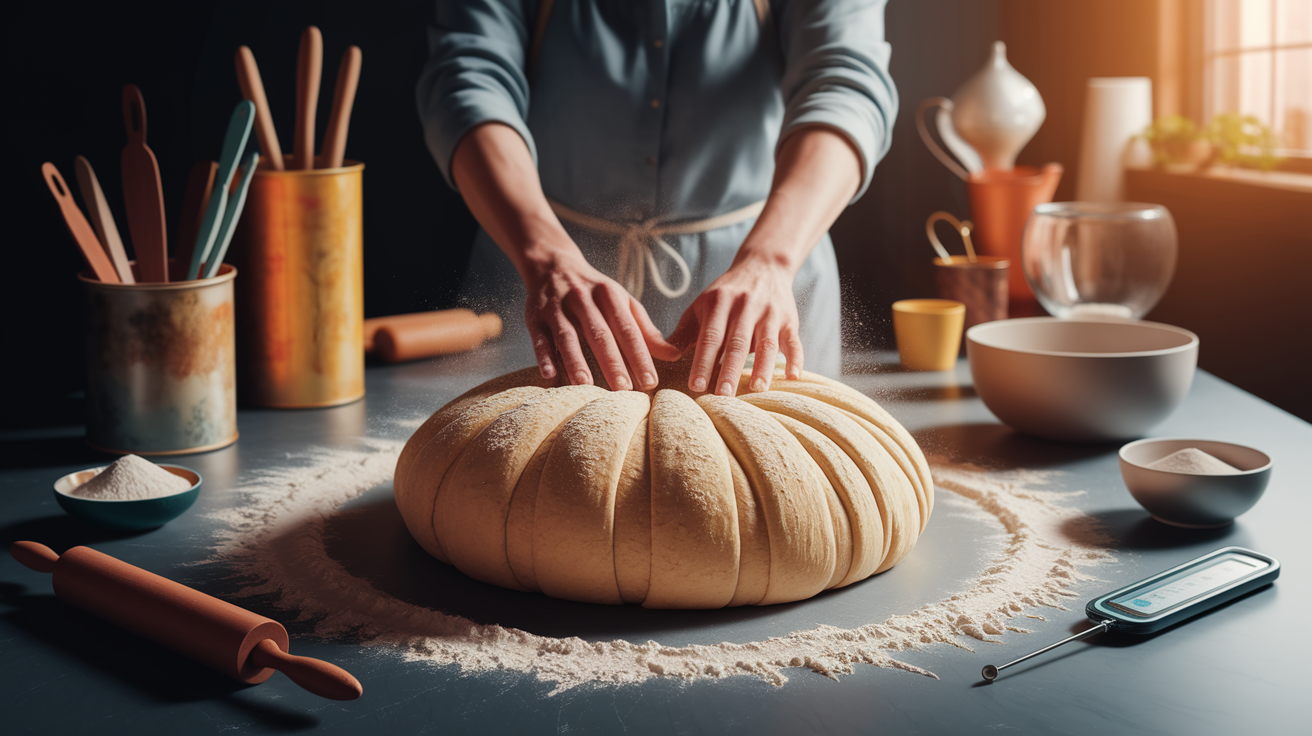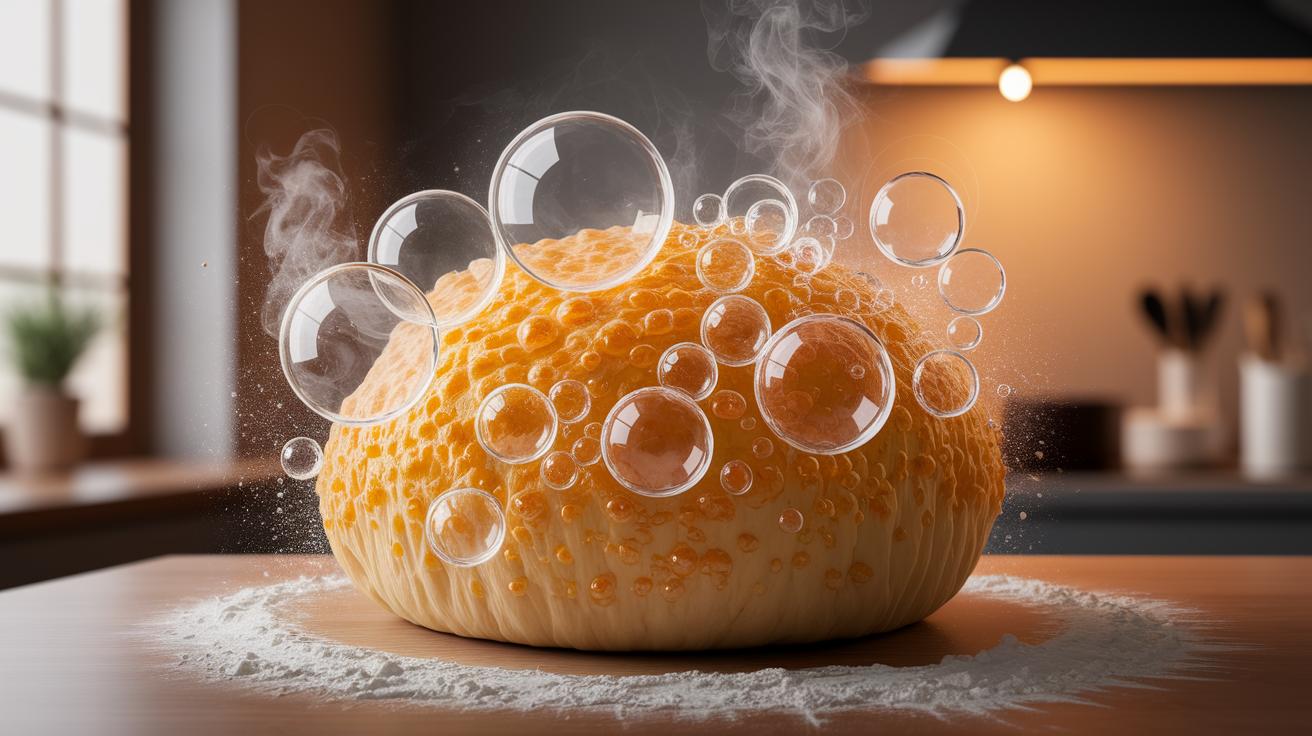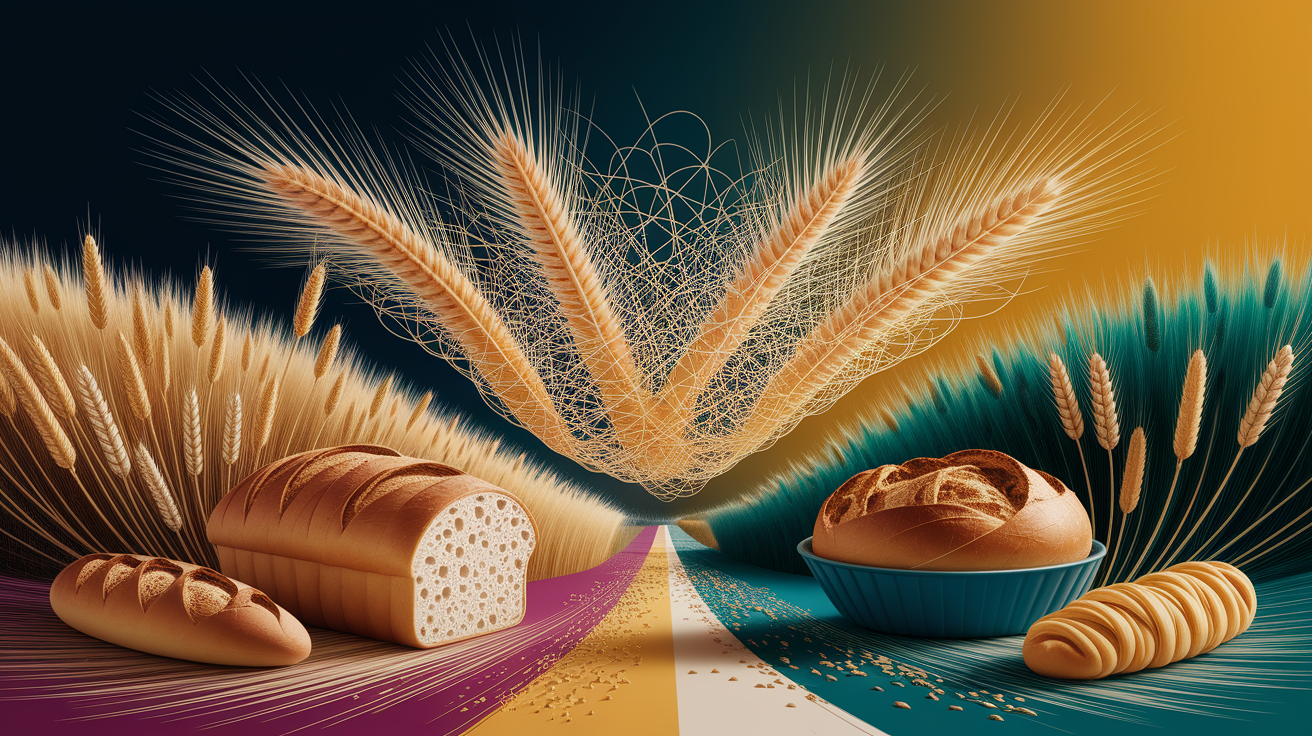Quick Answer: Bread rises thanks to a fascinating partnership between biology and chemistry. Tiny living organisms called yeast consume sugars in the flour, releasing carbon dioxide gas in a process called fermentation. This gas gets trapped within a stretchy, elastic network of gluten proteins, causing the dough to inflate like a collection of tiny balloons.
The Spark Behind the Rise
Have you ever marveled at the magic of bread-making? You start with a simple, dense lump of flour, water, salt, and yeast, and a few hours later, you have a light, airy, and wonderfully risen loaf. This transformation isn’t magic—it’s a beautiful symphony of chemical reactions happening right on your kitchen counter. The science of bread rising is an incredible dance between a hungry microorganism and the unique properties of flour.

Understanding what chemical reactions cause bread dough to rise can turn you from a hopeful baker into a confident one. At the heart of it all are two key players: yeast, the engine that produces the gas, and gluten, the framework that captures it. Let’s break down this amazing process step-by-step.
Yeast Fermentation—The Catalyst for Carbon Dioxide
The primary force that makes bread dough rise is a single-celled fungus you know as yeast. Think of yeast as a tiny, living factory. When you add it to your dough, it wakes up and gets hungry. Its food source is the carbohydrates (sugars) found in the flour.

Flour contains complex carbohydrates called starches. Enzymes within the flour, like amylase, act like molecular scissors, breaking these large starches down into simpler sugars like glucose and fructose, which are perfect bite-sized meals for yeast. This is where the main chemical reaction in bread making, called fermentation, begins.
During fermentation, the yeast consumes these simple sugars and, as byproducts, releases two key substances:
- Carbon Dioxide (CO2): This is the odorless, colorless gas that is the star of our show. As yeast produces countless tiny bubbles of CO2, they begin to inflate the dough from the inside out.
- Ethanol: This is an alcohol that largely evaporates during the baking process but contributes significantly to the characteristic flavor and aroma of freshly baked bread.
This biological process of using sugar to create energy and release gas is a fundamental part of nature. In a way, it’s similar to how plants use photosynthesis to create their energy and release the oxygen we need to live. The yeast begins feeding on the sugars in the flour and initiates a cascade of these chemical reactions that are essential for leavening.
Gluten Network—The Elastic Trap
Yeast producing gas is only half the story. What good is all that carbon dioxide if it just escapes into the air? For bread to rise, the gas needs to be trapped. This is where gluten comes in.
 Gluten Network—The Elastic Trap
Gluten Network—The Elastic Trap
Wheat flour contains two main proteins: glutenin and gliadin. On their own, they’re just jumbled-up molecules. But when you add water, they link together to form a remarkable new substance: gluten. It’s the unique molecular properties of water that make this transformation possible, allowing it to hydrate the proteins and starches in the flour. As the flour’s starches and proteins hydrate, they begin to absorb water and swell, forming a cohesive dough.
Gluten creates a crosslinked elastic network throughout the dough. You can think of it like a microscopic, stretchy net. This network has two crucial properties:
- Elasticity: The ability to stretch and then bounce back to its original shape.
- Extensibility: The ability to stretch out without breaking.
This incredible structure is what traps the carbon dioxide bubbles produced by the yeast. Without a well-developed gluten network, the CO2 would simply leak out, and you’d be left with a flat, dense brick instead of a loaf of bread. The formation of this network through hydrogen bonds and disulfide crosslinks is the key to creating the dough’s structure.
Bubble Formation—From Gas to Loaf
So, we have yeast making gas and a gluten network to trap it. What happens next? As the fermentation process continues, millions of tiny CO2 bubbles are generated throughout the dough. At first, these bubbles are small and separate. But as the yeast action continues, these bubbles begin to expand and merge.
 Yeast Fermentation—The Catalyst for Carbon Dioxide
Yeast Fermentation—The Catalyst for Carbon Dioxide
The pressure from the carbon dioxide pushes against the gluten network, stretching it like a balloon. The dough begins to visibly grow, or “rise.” The final texture of your bread, known as its “crumb,” is a direct result of this process. An open, airy crumb with large holes comes from larger, more vigorous gas bubbles, while a tight, fine crumb comes from smaller, more evenly distributed bubbles. You can often see the effect of these CO2 bubbles as they inflate the dough, especially during the final proofing stage.
Temperature & Kneading—Tuning the Rise
Bakers aren’t just passive observers in this process; they are conductors of this chemical orchestra. Two of the most important tools for controlling the rise are kneading and temperature.

The Role of Kneading
Kneading does more than just mix your ingredients. The physical act of stretching, folding, and pressing the dough actively helps develop the gluten network. It encourages the glutenin and gliadin proteins to align and form stronger, more organized bonds. This makes the dough both stronger and more elastic, improving its ability to trap gas. Understanding the science behind why kneading helps bread dough rise is key to mastering your bake.
The Importance of Temperature
Yeast is a living thing, and it’s sensitive to its environment. Temperature is one of the most significant factors affecting bread rising.
- Too Cold: Yeast activity will be very slow. Your dough will rise, but it will take a very long time.
- Too Hot (over 140°F or 60°C): The yeast will die, and fermentation will stop completely.
- Just Right: Yeast is happiest and most active in a warm environment, typically between 75-85°F (24-29°C). At this optimal temperature, it produces carbon dioxide at a steady, vigorous pace, leading to a good rise.
This is why recipes often tell you to let your dough rise in a “warm, draft-free place.” During fermentation, the dough also becomes slightly more acidic. This change in acidity, or pH, can affect the bread’s flavor and texture, much like how changes in pH can cause dramatic color changes in other substances.
From Dough to Delicious—Your Next Steps
The chemistry of baking bread is a perfect example of science you can eat! By understanding what’s happening at a molecular level, you can troubleshoot problems and gain more control over your final product.
To wrap it all up, here’s a quick recap:
- Fermentation: Yeast eats sugars from the flour and produces carbon dioxide gas and ethanol.
- Gluten Development: Flour proteins and water form a stretchy gluten network.
- Leavening: The carbon dioxide gas gets trapped by the gluten network, causing the dough to inflate.
- Control: You can manage this process by kneading to strengthen the gluten and controlling the temperature to manage yeast activity.
So, what if your bread isn’t rising properly? Armed with this knowledge, you can diagnose the issue. Is your yeast old or inactive? Is your kitchen too cold? Did you knead the dough enough to develop a strong gluten structure? By thinking like a scientist, you can turn a baking failure into a delicious success. The next time you pull a perfect loaf from the oven, take a moment to appreciate the amazing chemistry that rose to the occasion.













